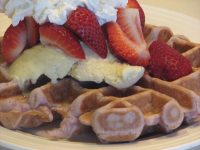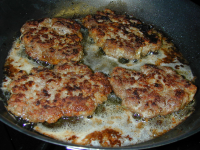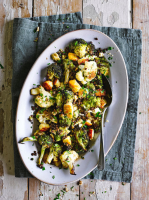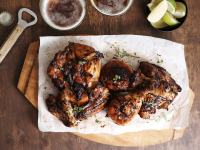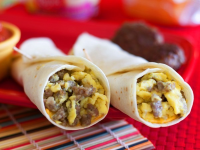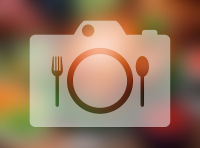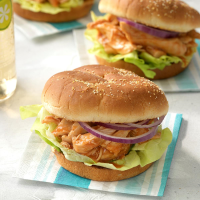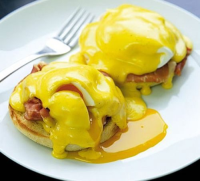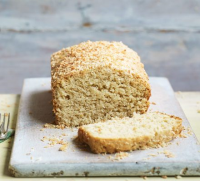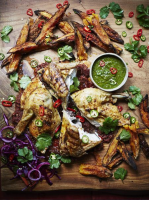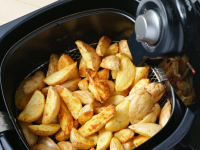FRESH EGG PASTA RECIPE - NYT COOKING

This adaptable pasta recipe will work with whatever flour you’ve got in the pantry. Using the “00” gives the silkiest, softest pasta while bread flour will give you more of a satisfying chew, and all-purpose lands you squarely in the middle. Because flour absorbs liquid differently depending on its age and the humidity in the air, consider these amounts as a guide and not as the law. Use your judgment. If the dough seems too wet and sticky to work with, add a bit more flour; if it seems too dry to come together into a smooth, satiny ball, add a bit more oil. The pasta is wonderful cooked right away, but you could dry it for future use instead. Let it hang in strands over the backs of your kitchen chairs or on a washing line if you have one. Or you can curl handfuls of pasta into loose nests and let them dry out on the sheet trays, uncovered.
Provided by Melissa Clark
Total Time 1 hours 30 minutes
Yield 4 to 6 servings, about 1 pound
Number Of Ingredients 5
Steps:
- In a food processor, pulse together flour and salt. Add eggs, yolks and oil and run the machine until the dough holds together. If dough looks dry, add another teaspoon olive oil. If dough looks wet, add a little flour until dough is tacky and elastic.
- Dump dough onto a work surface and knead briefly until very smooth. Wrap in plastic and rest at room temperature for 1 hour or in the fridge overnight. (If pressed for time, the dough can be used after a 30-minute rest; just note that it would be slightly harder to roll out.)
- Cut the dough into 4 pieces, keeping them covered with plastic wrap or a dish towel when not in use. (If you’re rolling the dough out by hand, rather than using a pasta machine, cut it into 2 pieces instead.) Using a pasta roller set to the thickest (widest) setting, roll one piece of dough out into a sheet. Fold the sheet in thirds like a letter and pass it through the machine 2 more times on the same setting.
- Reduce the setting, and repeat rolling and folding the dough, passing it through the machine 2 or 3 times before going to the next setting. For pappardelle and fettuccine, stop rolling when the dough is about 1 or 2 settings wider than the thinnest one on your roller. For lasagna noodles, and for ravioli and other stuffed or filled pasta, go to the thinnest setting. (To roll dough by hand, see note below.)
- Shape the pasta. For pappardelle, cut rolled pasta into 1-inch-wide strips. For fettuccine, run the rolled sheets through the fettuccine setting on your roller. Place cut pasta on a flour-dusted sheet tray and cover with a dish towel while rolling and cutting the remaining dough. Make sure to sprinkle flour over the cut pasta before you place another layer on top. If not using immediately, cover the sheet pan with a dish towel to keep the dough supple.
- Bring a large pot of well-salted water to a boil, add fresh pasta and boil for 1 to 3 minutes, depending on thickness of the pasta. Drain well.
Nutrition Facts : @context http//schema.org, Calories 243, UnsaturatedFatContent 4 grams, CarbohydrateContent 37 grams, FatContent 6 grams, FiberContent 1 gram, ProteinContent 8 grams, SaturatedFatContent 2 grams, SodiumContent 175 milligrams, SugarContent 0 grams, TransFatContent 0 grams
ITALIAN CARBONARA | JAMIE OLIVER PASTA & RISOTTO RECIPES

Just a handful of ingredients makes a fantastic carbonara and, done properly, it’s a thing of beauty.
Total Time 10 minutes
Yield 2
Number Of Ingredients 6
Steps:
- Put the egg yolks into a bowl, finely grate in the Parmesan, season with pepper, then mix well with a fork and put to one side.
- Cut any hard skin off the pancetta and set aside, then chop the meat.
- Cook the spaghetti in a large pan of boiling salted water until al dente.
- Meanwhile, rub the pancetta skin, if you have any, all over the base of a medium frying pan (this will add fantastic flavour, or use 1 tablespoon of oil instead), then place over a medium-high heat.
- Peel the garlic, then crush with the palm of your hand, add it to the pan and leave it to flavour the fat for 1 minute. Stir in the pancetta, then cook for 4 minutes, or until it starts to crisp up.
- Pick out and discard the garlic from the pan, then, reserving some of the cooking water, drain and add the spaghetti. Toss well over the heat so it really soaks up all that lovely flavour, then remove the pan from the heat.
- Add a splash of the cooking water and toss well, season with pepper, then pour in the egg mixture – the pan will help to cook the egg gently, rather than scrambling it. Toss well, adding more cooking water until it’s lovely and glossy.
- Serve with a grating of Parmesan and an extra twist of pepper.
Nutrition Facts : Calories 860 calories, FatContent 47.5 g fat, SaturatedFatContent 16.5 g saturated fat, ProteinContent 37.8 g protein, CarbohydrateContent 74.8 g carbohydrate, SugarContent 3.6 g sugar, SodiumContent 3.3 g salt, FiberContent 3.1 g fibre
More about "egg pasta recipe italian recipes"
HOW TO MAKE FRESH PASTA | HOMEMADE PASTA - JAMIE OLIVER
Simple ingredients and little bit of love is all you need to make your own perfect pasta dough.
From jamieoliver.com
Total Time 1 hours
Cuisine https://schema.org/VegetarianDiet, https://schema.org/LowLactoseDiet
Calories 415 calories per serving
From jamieoliver.com
Total Time 1 hours
Cuisine https://schema.org/VegetarianDiet, https://schema.org/LowLactoseDiet
Calories 415 calories per serving
- Place the flour on a board or in a bowl. Make a well in the centre and crack the eggs into it. Beat the eggs with a fork until smooth.
- Using the tips of your fingers, mix the eggs with the flour, incorporating a little at a time, until everything is combined.
- Knead the pieces of dough together – with a bit of work and some love and attention they’ll all bind together to give you one big, smooth lump of dough!
- Once you’ve made your dough you need to knead and work it with your hands to develop the gluten in the flour, otherwise your pasta will be flabby and soft when you cook it, instead of springy and al dente. There’s no secret to kneading. You just have to bash the dough about a bit with your hands, squashing it into the table, reshaping it, pulling it, stretching it, squashing it again. It’s quite hard work, and after a few minutes it’s easy to see why the average Italian grandmother has arms like Frank Bruno! You’ll know when to stop – it’s when your pasta starts to feel smooth and silky instead of rough and floury.
- Wrap the dough in clingfilm and put it in the fridge to rest for at least 30 minutes – make sure the clingfilm covers it well or it will dry out and go crusty round the edges (this will give you crusty lumps through your pasta when you roll it out, and nobody likes crusty lumps!).
- How to roll your pasta: first of all, if you haven't got a pasta machine it's not the end of the world! All the mammas I met while travelling round Italy rolled pasta with their trusty rolling pins and they wouldn't even consider having a pasta machine in the house! When it comes to rolling, the main problem you'll have is getting the pasta thin enough to work with. It's quite difficult to get a big lump of dough rolled out in one piece, and you need a very long rolling pin to do the job properly. The way around this is to roll lots of small pieces of pasta rather than a few big ones. You'll be rolling your pasta into a more circular shape than the long rectangular shapes you'll get from a machine, but use your head and you'll be all right!
- If using a machine to roll your pasta, make sure it's clamped firmly to a clean work surface before you start (use the longest available work surface you have). If your surface is cluttered with bits of paper, the kettle, the bread bin, the kids' homework and stuff like that, shift all this out of the way for the time being. It won't take a minute, and starting with a clear space to work in will make things much easier, I promise.
- Dust your work surface with some Tipo 00 flour, take a lump of pasta dough the size of a large orange and press it out flat with your fingertips. Set the pasta machine at its widest setting - and roll the lump of pasta dough through it. Lightly dust the pasta with flour if it sticks at all.
- Click the machine down a setting and roll the pasta dough through again. Fold the pasta in half, click the pasta machine back up to the widest setting and roll the dough through again. Repeat this process five or six times. It might seem like you're getting nowhere, but in fact you're working the dough, and once you've folded it and fed it through the rollers a few times, you'll feel the difference. It'll be smooth as silk and this means you're making wicked pasta!
- Now it's time to roll the dough out properly, working it through all the settings on the machine, from the widest down to around the narrowest. Lightly dust both sides of the pasta with a little flour every time you run it through.
- When you've got down to the narrowest setting, to give yourself a tidy sheet of pasta, fold the pasta in half lengthways, then in half again, then in half again once more until you've got a square-ish piece of dough. Turn it 90 degrees and feed it through the machine at the widest setting. As you roll it down through the settings for the last time, you should end up with a lovely rectangular silky sheet of dough with straight sides - just like a real pro! If your dough is a little cracked at the edges, fold it in half just once, click the machine back two settings and feed it through again. That should sort things out.
- Whether you're rolling by hand or by machine you'll need to know when to stop. If you're making pasta like tagliatelle, lasagne or stracchi you'll need to roll the pasta down to between the thickness of a beer mat and a playing card; if you're making a stuffed pasta like ravioli or tortellini, you'll need to roll it down slightly thinner or to the point where you can clearly see your hand or lines of newsprint through it.
- Once you've rolled your pasta the way you want it, you need to shape or cut it straight away. Pasta dries much quicker than you think, so whatever recipe you're doing, don't leave it more than a minute or two before cutting or shaping it. You can lay over a damp clean tea towel which will stop it from drying.
See details
BASIC DOUGH FOR FRESH EGG PASTA RECIPE - NYT COOKING
Fresh pasta isn’t something you can master in one go. There’s a learning curve. Only experience can teach you how the dough should feel and how thin to roll it. (Not that it needs to be rolled by hand with a rolling pin. A hand-crank pasta machine is a fine tool, perfect for a small batch.) But pasta making isn’t rocket science either. Most competent home cooks will succeed, even if they never match the prowess of mythic Italian nonnas. Fresh homemade egg pasta is definitely worth the effort, though, and it is always better than commercially produced versions.
From cooking.nytimes.com
Reviews 5
Total Time 1 hours 20 minutes
Cuisine italian
Calories 285 per serving
From cooking.nytimes.com
Reviews 5
Total Time 1 hours 20 minutes
Cuisine italian
Calories 285 per serving
- Divide dough into 4 pieces. Knead each piece until smooth. Roll with a rolling pin or pasta machine as thinly as possible (but not quite paper-thin). Cut each sheet in half, making 8 smaller sheets. Dust dough sheets lightly with semolina to keep them from sticking. Stack 2 or 3 sheets, roll loosely, then cut into 1/2-inch-wide noodles or other desired shape. Continue until all dough is used. Gently fluff noodles and spread on a semolina-dusted baking sheet. Refrigerate, uncovered, until ready to cook.
See details
FRESH EGG PASTA RECIPE - NYT COOKING
This adaptable pasta recipe will work with whatever flour you’ve got in the pantry. Using the “00” gives the silkiest, softest pasta while bread flour will give you more of a satisfying chew, and all-purpose lands you squarely in the middle. Because flour absorbs liquid differently depending on its age and the humidity in the air, consider these amounts as a guide and not as the law. Use your judgment. If the dough seems too wet and sticky to work with, add a bit more flour; if it seems too dry to come together into a smooth, satiny ball, add a bit more oil. The pasta is wonderful cooked right away, but you could dry it for future use instead. Let it hang in strands over the backs of your kitchen chairs or on a washing line if you have one. Or you can curl handfuls of pasta into loose nests and let them dry out on the sheet trays, uncovered.
From cooking.nytimes.com
Reviews 5
Total Time 1 hours 30 minutes
Cuisine italian
Calories 243 per serving
From cooking.nytimes.com
Reviews 5
Total Time 1 hours 30 minutes
Cuisine italian
Calories 243 per serving
- Bring a large pot of well-salted water to a boil, add fresh pasta and boil for 1 to 3 minutes, depending on thickness of the pasta. Drain well.
See details
ITALIAN CARBONARA | JAMIE OLIVER PASTA & RISOTTO RECIPES
Just a handful of ingredients makes a fantastic carbonara and, done properly, it’s a thing of beauty.
From jamieoliver.com
Total Time 10 minutes
Cuisine italian
Calories 860 calories per serving
From jamieoliver.com
Total Time 10 minutes
Cuisine italian
Calories 860 calories per serving
- Put the egg yolks into a bowl, finely grate in the Parmesan, season with pepper, then mix well with a fork and put to one side.
- Cut any hard skin off the pancetta and set aside, then chop the meat.
- Cook the spaghetti in a large pan of boiling salted water until al dente.
- Meanwhile, rub the pancetta skin, if you have any, all over the base of a medium frying pan (this will add fantastic flavour, or use 1 tablespoon of oil instead), then place over a medium-high heat.
- Peel the garlic, then crush with the palm of your hand, add it to the pan and leave it to flavour the fat for 1 minute. Stir in the pancetta, then cook for 4 minutes, or until it starts to crisp up.
- Pick out and discard the garlic from the pan, then, reserving some of the cooking water, drain and add the spaghetti. Toss well over the heat so it really soaks up all that lovely flavour, then remove the pan from the heat.
- Add a splash of the cooking water and toss well, season with pepper, then pour in the egg mixture – the pan will help to cook the egg gently, rather than scrambling it. Toss well, adding more cooking water until it’s lovely and glossy.
- Serve with a grating of Parmesan and an extra twist of pepper.
See details
HOW TO MAKE FRESH PASTA | HOMEMADE PASTA - JAMIE OLIVER
Simple ingredients and little bit of love is all you need to make your own perfect pasta dough.
From jamieoliver.com
Total Time 1 hours
Cuisine https://schema.org/VegetarianDiet, https://schema.org/LowLactoseDiet
Calories 415 calories per serving
From jamieoliver.com
Total Time 1 hours
Cuisine https://schema.org/VegetarianDiet, https://schema.org/LowLactoseDiet
Calories 415 calories per serving
- Place the flour on a board or in a bowl. Make a well in the centre and crack the eggs into it. Beat the eggs with a fork until smooth.
- Using the tips of your fingers, mix the eggs with the flour, incorporating a little at a time, until everything is combined.
- Knead the pieces of dough together – with a bit of work and some love and attention they’ll all bind together to give you one big, smooth lump of dough!
- Once you’ve made your dough you need to knead and work it with your hands to develop the gluten in the flour, otherwise your pasta will be flabby and soft when you cook it, instead of springy and al dente. There’s no secret to kneading. You just have to bash the dough about a bit with your hands, squashing it into the table, reshaping it, pulling it, stretching it, squashing it again. It’s quite hard work, and after a few minutes it’s easy to see why the average Italian grandmother has arms like Frank Bruno! You’ll know when to stop – it’s when your pasta starts to feel smooth and silky instead of rough and floury.
- Wrap the dough in clingfilm and put it in the fridge to rest for at least 30 minutes – make sure the clingfilm covers it well or it will dry out and go crusty round the edges (this will give you crusty lumps through your pasta when you roll it out, and nobody likes crusty lumps!).
- How to roll your pasta: first of all, if you haven't got a pasta machine it's not the end of the world! All the mammas I met while travelling round Italy rolled pasta with their trusty rolling pins and they wouldn't even consider having a pasta machine in the house! When it comes to rolling, the main problem you'll have is getting the pasta thin enough to work with. It's quite difficult to get a big lump of dough rolled out in one piece, and you need a very long rolling pin to do the job properly. The way around this is to roll lots of small pieces of pasta rather than a few big ones. You'll be rolling your pasta into a more circular shape than the long rectangular shapes you'll get from a machine, but use your head and you'll be all right!
- If using a machine to roll your pasta, make sure it's clamped firmly to a clean work surface before you start (use the longest available work surface you have). If your surface is cluttered with bits of paper, the kettle, the bread bin, the kids' homework and stuff like that, shift all this out of the way for the time being. It won't take a minute, and starting with a clear space to work in will make things much easier, I promise.
- Dust your work surface with some Tipo 00 flour, take a lump of pasta dough the size of a large orange and press it out flat with your fingertips. Set the pasta machine at its widest setting - and roll the lump of pasta dough through it. Lightly dust the pasta with flour if it sticks at all.
- Click the machine down a setting and roll the pasta dough through again. Fold the pasta in half, click the pasta machine back up to the widest setting and roll the dough through again. Repeat this process five or six times. It might seem like you're getting nowhere, but in fact you're working the dough, and once you've folded it and fed it through the rollers a few times, you'll feel the difference. It'll be smooth as silk and this means you're making wicked pasta!
- Now it's time to roll the dough out properly, working it through all the settings on the machine, from the widest down to around the narrowest. Lightly dust both sides of the pasta with a little flour every time you run it through.
- When you've got down to the narrowest setting, to give yourself a tidy sheet of pasta, fold the pasta in half lengthways, then in half again, then in half again once more until you've got a square-ish piece of dough. Turn it 90 degrees and feed it through the machine at the widest setting. As you roll it down through the settings for the last time, you should end up with a lovely rectangular silky sheet of dough with straight sides - just like a real pro! If your dough is a little cracked at the edges, fold it in half just once, click the machine back two settings and feed it through again. That should sort things out.
- Whether you're rolling by hand or by machine you'll need to know when to stop. If you're making pasta like tagliatelle, lasagne or stracchi you'll need to roll the pasta down to between the thickness of a beer mat and a playing card; if you're making a stuffed pasta like ravioli or tortellini, you'll need to roll it down slightly thinner or to the point where you can clearly see your hand or lines of newsprint through it.
- Once you've rolled your pasta the way you want it, you need to shape or cut it straight away. Pasta dries much quicker than you think, so whatever recipe you're doing, don't leave it more than a minute or two before cutting or shaping it. You can lay over a damp clean tea towel which will stop it from drying.
See details
BASIC DOUGH FOR FRESH EGG PASTA RECIPE - NYT COOKING
Fresh pasta isn’t something you can master in one go. There’s a learning curve. Only experience can teach you how the dough should feel and how thin to roll it. (Not that it needs to be rolled by hand with a rolling pin. A hand-crank pasta machine is a fine tool, perfect for a small batch.) But pasta making isn’t rocket science either. Most competent home cooks will succeed, even if they never match the prowess of mythic Italian nonnas. Fresh homemade egg pasta is definitely worth the effort, though, and it is always better than commercially produced versions.
From cooking.nytimes.com
Reviews 5
Total Time 1 hours 20 minutes
Cuisine italian
Calories 285 per serving
From cooking.nytimes.com
Reviews 5
Total Time 1 hours 20 minutes
Cuisine italian
Calories 285 per serving
- Divide dough into 4 pieces. Knead each piece until smooth. Roll with a rolling pin or pasta machine as thinly as possible (but not quite paper-thin). Cut each sheet in half, making 8 smaller sheets. Dust dough sheets lightly with semolina to keep them from sticking. Stack 2 or 3 sheets, roll loosely, then cut into 1/2-inch-wide noodles or other desired shape. Continue until all dough is used. Gently fluff noodles and spread on a semolina-dusted baking sheet. Refrigerate, uncovered, until ready to cook.
See details
FRESH SEMOLINA AND EGG PASTA RECIPE | ALLRECIPES
The flavor was "okay", but the pasta was tough, even after boiling for almost 15 minutes. I suspect that had something to do with the fact that there's egg in the dough. Most pasta (except egg noodles) doesn't usually have egg in it. I'm sorry, but I think I'll keep looking for an egg-less semolina pasta recipe.
From allrecipes.com
From allrecipes.com
See details
PASTA SAUCE WITH ITALIAN SAUSAGE RECIPE | ALLRECIPES
Made it a few times as the recipe states, but have added a little extra ground beef (up to 1 pound total) and Italian sausage (up to 1.5 pounds and we like spicy, so I use hot Italian …
From allrecipes.com
From allrecipes.com
See details
15 TRADITIONAL ITALIAN PASTA RECIPES - AUTHENTIC ITALIAN ...
20/7/2021 · If there’s one famous Italian pasta dish, that everyone heard about besides the Carbonara, that’s definitely the Pasta all’arrabbiata. Now, if you’d like to try this spicy Italian pasta recipe at home, here’s how to make it: by Dymphe from Dymabroad. One of the best traditional Italian pasta recipes is pasta …
From lifeinitaly.com
From lifeinitaly.com
See details
FRESH PASTA RECIPE - SERIOUS EATS
3/1/2021 · Fresh Pasta Recipe A light, springy, delicate homemade fresh pasta, this recipe is as well-suited to slicing into noodles as it is to making stuffed …
From seriouseats.com
From seriouseats.com
See details
ITALIAN EGG DROP SOUP, STRACCIATELLA RECIPE - SIMPLY R…
29/10/2013 · Stracciatella (sometimes called Italian egg drop soup) is a light and nourishing soup made with chicken stock, egg, Parmesan cheese, and ribbons of freshly cut spinach. It’s a terrific soup recipe …
From simplyrecipes.com
From simplyrecipes.com
See details
FRESH PASTA RECIPES - GREAT ITALIAN CHEFS
Pasta has been a staple of the Italian diet for well over a millennium and today there's no escaping pasta, wherever you go in the world. Whilst dried pasta is good for tossing in a starchy pasta sauce, sometimes only the silky elasticity of fresh pasta …
From greatitalianchefs.com
From greatitalianchefs.com
See details
FRESH PASTA RECIPES - GREAT ITALIAN CHEFS
Pasta has been a staple of the Italian diet for well over a millennium and today there's no escaping pasta, wherever you go in the world. Whilst dried pasta is good for tossing in a starchy pasta sauce, sometimes only the silky elasticity of fresh pasta …
From greatitalianchefs.com
From greatitalianchefs.com
See details
ITALIAN SAUSAGE PASTA SAUCE RECIPE - THE SPRUCE EATS
9/2/2022 · But if you wanted to use Italian sausages in the casing, you would first brown them in a skillet, then add about a cup of water and simmer, …
From thespruceeats.com
From thespruceeats.com
See details
FILLED PASTA RECIPES - GREAT ITALIAN CHEFS
While most pasta dishes have their sauces and toppings brazenly displayed Italy's numerous varieties of filled pasta are a more modest bunch, keeping the majority of their flavour tucked away inside. From familiar faces such as ravioli and tortellini to agnolotti and other more unusual varieties, this collection of filled pasta recipes …
From greatitalianchefs.com
From greatitalianchefs.com
See details
PASTA RECIPES | NIGELLA'S RECIPES | NIGELLA LAWSON
Pasta Recipes. My starting point with pasta, portionwise, is 100g dried weight of pasta per person for a main, on average; there are variables, of course, appetite and age chief among them. Other factors that come into play, when it comes to weight out pasta…
From nigella.com
From nigella.com
See details
SAUSAGE, EGG AND BISCUITS CASSEROLE RECIPE | MYRECIPES
55+ Easy Dinner Recipes for Busy Weeknights Everybody understands the stuggle of getting dinner on the table after a long day. If you're looking for a simple recipe …
From myrecipes.com
From myrecipes.com
See details
FRESH SEMOLINA AND EGG PASTA RECIPE | ALLRECIPES
The flavor was "okay", but the pasta was tough, even after boiling for almost 15 minutes. I suspect that had something to do with the fact that there's egg in the dough. Most pasta (except egg noodles) doesn't usually have egg in it. I'm sorry, but I think I'll keep looking for an egg-less semolina pasta recipe.
From allrecipes.com
From allrecipes.com
See details
PASTA SAUCE WITH ITALIAN SAUSAGE RECIPE | ALLRECIPES
Made it a few times as the recipe states, but have added a little extra ground beef (up to 1 pound total) and Italian sausage (up to 1.5 pounds and we like spicy, so I use hot Italian …
From allrecipes.com
From allrecipes.com
See details
15 TRADITIONAL ITALIAN PASTA RECIPES - AUTHENTIC ITALIAN ...
20/7/2021 · If there’s one famous Italian pasta dish, that everyone heard about besides the Carbonara, that’s definitely the Pasta all’arrabbiata. Now, if you’d like to try this spicy Italian pasta recipe at home, here’s how to make it: by Dymphe from Dymabroad. One of the best traditional Italian pasta recipes is pasta …
From lifeinitaly.com
From lifeinitaly.com
See details
FRESH PASTA RECIPE - SERIOUS EATS
3/1/2021 · Fresh Pasta Recipe A light, springy, delicate homemade fresh pasta, this recipe is as well-suited to slicing into noodles as it is to making stuffed …
From seriouseats.com
From seriouseats.com
See details
ITALIAN EGG DROP SOUP, STRACCIATELLA RECIPE - SIMPLY R…
29/10/2013 · Stracciatella (sometimes called Italian egg drop soup) is a light and nourishing soup made with chicken stock, egg, Parmesan cheese, and ribbons of freshly cut spinach. It’s a terrific soup recipe …
From simplyrecipes.com
From simplyrecipes.com
See details
FRESH PASTA RECIPES - GREAT ITALIAN CHEFS
Pasta has been a staple of the Italian diet for well over a millennium and today there's no escaping pasta, wherever you go in the world. Whilst dried pasta is good for tossing in a starchy pasta sauce, sometimes only the silky elasticity of fresh pasta …
From greatitalianchefs.com
From greatitalianchefs.com
See details















